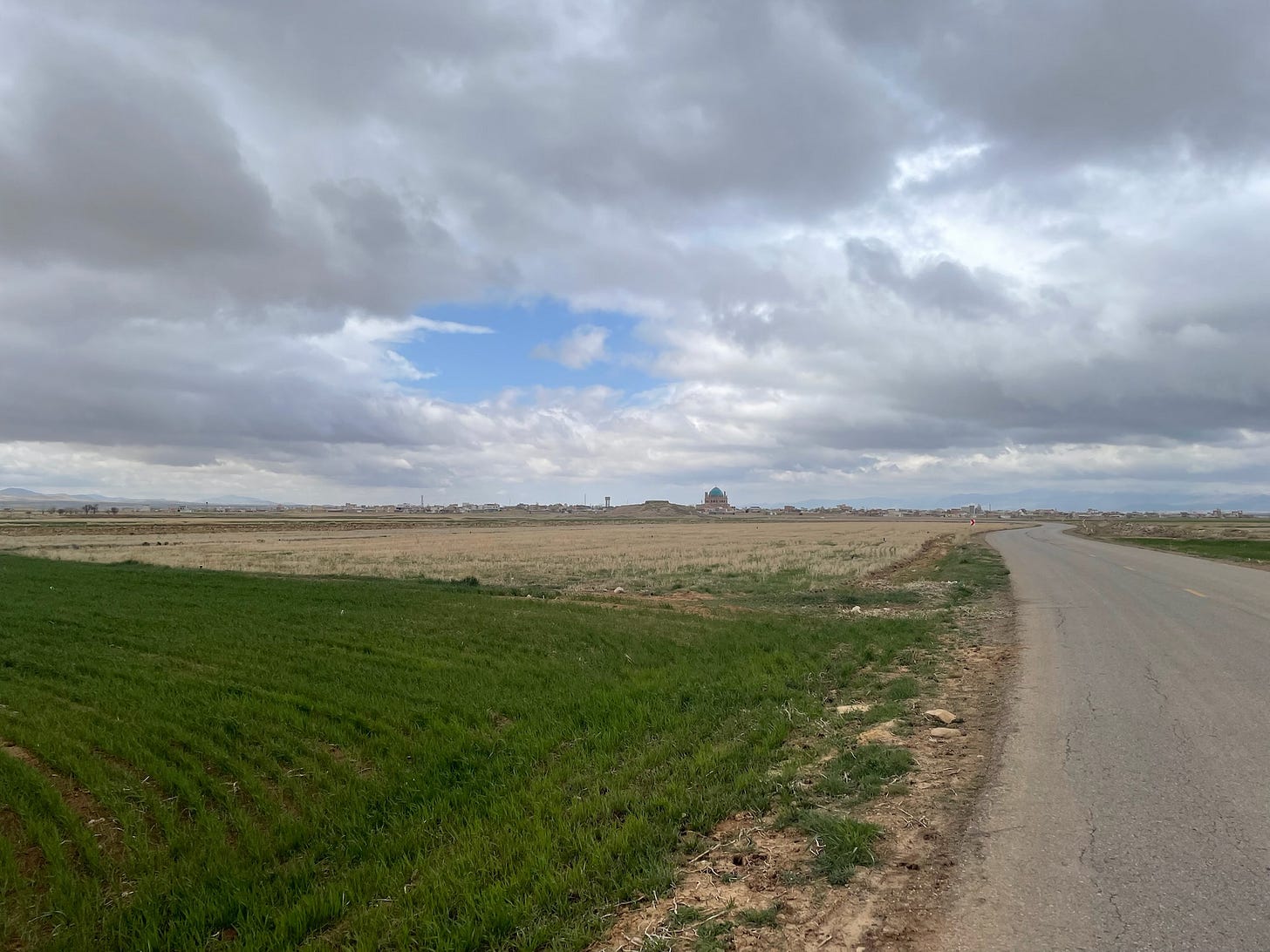If I think back of the architectural highlights of my Journey to the East, The Soltaniyeh Dome in Zanjan province, Iran, is definitely among them. But before passing through Tabriz, I had never heard of it. Since it wasn’t directly on the ancient Silk Road route via Zanjan and Qazvin, I hadn’t come across it in my preparations. It was pure coincidence I met someone who stopped his car to offer me some cookies and mentioned the place he was heading to. He even offered me a ride in his van, which I politely declined. But the next day, after staying in Zanjan, I decided to make the detour. With the very chilly wind in my favor, I had no difficulty reaching Soltaniyeh a little after lunchtime.
The double-shell dome, covered with magnificent shiny faience, was a masterpiece in itself and had clearly been a benchmark for much of Islamic religious architecture that followed. Since the Dome of Soltaniyeh has been designated a UNESCO World Heritage Site, it turned out to be a popular destination. Dozens of people were around on the lawns, inside the mausoleum, or on the octagonal roof deck. But I assume they must have been as disappointed as I was with the interior. The entire space was filled with scaffolding, apparently part of a major restoration project, since long stalled. Fortunately, I could still appreciate some remarkable details, including the indigo-blue ornamentation.
Due to the cold, I didn’t want to stay long, and soon resumed my route further East. But with the vast flatlands surrounding Soltaniyeh, I could still see the shimmer of the cupola behind me for a long time. And once again, comparable to the Hagia Sophia in Istanbul,I was reassured of the power of architecture to reach heights that inspire awe in all people. Here, perhaps exactly halfway through my journey, I was once again exposed to something that became a bridge for East and West to acknowledge a cultural quality beyond oppositions.
This post contains a preview of a forthcoming book about Journey to the East, highlighting the perpetuating tensions and sometimes awkward dialogues between East and West as found on my quest for a New Silk on an Old Road.





